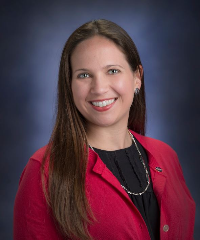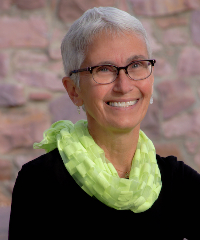GISN & STEM Professionals' Blog - GLOBE International STEM Network
GISN & STEM Professionals' Blog
The GISN and STEM Professional's Blog is an online collaborative effort where scientists associated with GLOBE post their thoughts, comments, and philosophies about a variety of science topics.
GLOBE strongly encourages positive and productive discussions to
further advance the scientific understanding of all involved with the
GLOBE Program.
Filter By:
Blogs List
The GLOBE Clouds team is delighted to announce this new section that showcases sky and cloud photographs from around the world! We’ve also been receiving some amazing questions from students.
The featured question was asked by students from Corpus Christi Catholic School :
Question: Why can we see clouds but not evaporation?
Answer: Water vapor is invisible. However, the water in clouds is in liquid or solid state, not gas.
Do you have a favorite cloud photo or a question for the team? Use the linked form to cast your vote and ask us any question ...
Read More »
Posted in:
Curriculum:
STEM
GLOBE Science Topics:
BACKYARD SCIENCE
CLIMATE
CLIMATE CHANGE
GENERAL SCIENCE
GENERAL SCIENCE @ES
EARTH AS A SYSTEM
EARTH SYSTEM SCIENCE
Investigation Areas:
ATMOSPHERE
EARTH AS A SYSTEM
News Topics:
NEWS BRIEFS
Primary Audience:
ALUMNI
COUNTRY COORDINATORS
PARTNERS
SCIENTISTS
STUDENTS
TEACHERS
TRAINERS
Waleska works with in-service teachers in the teacher training programs of the Galileo University and the University of San Carlos of Guatemala. She is the founder and coordinator of the STEAM program
Question: Where are you from?
Answer: I was born in the city of the eternal Spring, Guatemala City, in Central America, several eclipses, comets, and moons ago.
Question: What inspired you to work in this field?
Answer: Since I was little I had a fascination with natural phenomena, the reason why stars shine led me to be a Physicist, and fireflies and ...
Posted in:
Curriculum:
STEM
GLOBE Science Topics:
BACKYARD SCIENCE
CLIMATE
CLIMATE CHANGE
DATA INCLUDED
GENERAL SCIENCE
GENERAL SCIENCE @ES
SCIENTIST SKILLS
Investigation Areas:
ATMOSPHERE
EARTH AS A SYSTEM
Primary Audience:
ALUMNI
COUNTRY COORDINATORS
PARTNERS
SCIENTISTS
STUDENTS
TEACHERS
TRAINERS
Brad Hegyi is a research scientist for the NASA Prediction of Worldwide Energy Resources (POWER) project team at Langley Research Center in Hampton, Virginia, USA. Brad develops metrics and statistics for POWER from model estimates of future climate to help support planning for future energy use by heating and cooling systems in buildings. Brad also helps create interactive data products to better visualize changes occurring in the climate data.
The energy that comes from the Sun is the basic source of energy for everything on Earth. Solar energy drives Earth’s weather and ...
Posted in:
Curriculum:
TECHNOLOGY
STEM
GLOBE Science Topics:
BACKYARD SCIENCE
CLIMATE
CLIMATE CHANGE
DATA INCLUDED
GENERAL SCIENCE
EARTH AS A SYSTEM
EARTH SYSTEM SCIENCE
SCIENTIST SKILLS
Investigation Areas:
ATMOSPHERE
EARTH AS A SYSTEM
Primary Audience:
ALUMNI
COUNTRY COORDINATORS
PARTNERS
SCIENTISTS
STUDENTS
TEACHERS
TRAINERS
The Sun drives many processes in Earth’s atmosphere. As the Sun rises and sets, it warms the Earth’s surface at different intensities. These changes in heat lead to changes in the clouds, especially the types of clouds. To study these changes, we need observations at different times over the course of hours, days, weeks, months, and years from around the globe. It can be tricky to capture the extent of these interactions with satellites alone, which is why we need observations from your perspective on the ground as part of the GLOBE Eclipse Challenge: Clouds and Our ...
Posted in:
Curriculum:
STEM
GLOBE Science Topics:
BACKYARD SCIENCE
CLIMATE
CLIMATE CHANGE
DATA INCLUDED
GENERAL SCIENCE
GLOBE PROTOCOLS
EARTH AS A SYSTEM
Investigation Areas:
ATMOSPHERE
EARTH AS A SYSTEM
Presentation on February 9, 2023
Posted in:
Curriculum:
TECHNOLOGY
STEM
GLOBE International STEM Network (GISN):
GLOBE INTERNATIONAL STEM NETWORK (GISN)
GLOBE Science Topics:
GENERAL SCIENCE
SCIENTIST SKILLS
Uno de los momentos más emocionantes al realizar una observación de nubes es recibir tu correo electrónico personalizado de la NASA. El correo electrónico incluye datos sobre tu observación, hora y ubicación, y los compara con los datos obtenidos por satélites aproximadamente al mismo tiempo y en tu ubicación.
Comprensión de las tres partes de tu tabla de coincidencias con satélites: general, detallada e imágenes
Para cada sección, observa las comparaciones generales entre tu reporte y los datos resultantes. Recuerda, tu punto de vista del cielo (desde el suelo mirando hacia ...
Posted in:
Curriculum:
LANGUAGE CULTURE AND ARTS
SCIENCE AND MATH
STEM
GLOBE International STEM Network (GISN):
GLOBE INTERNATIONAL STEM NETWORK (GISN)
GLOBE Science Topics:
BACKYARD SCIENCE
CLIMATE
CLIMATE CHANGE
GENERAL SCIENCE
GLOBE PROTOCOLS
EARTH AS A SYSTEM
EARTH SYSTEM SCIENCE
Investigation Areas:
ATMOSPHERE
EARTH AS A SYSTEM
News Topics:
NEWS BRIEFS
El equipo de NASA GLOBE Nubes se complace en anunciar la adición de NOAA-20, un nuevo satélite, a las capacidades de comparación de satélites. Esto significa que cuando realizas tus observaciones de nubes, pueden coincidir con NOAA-20, pero ¿qué es NOAA-20?
Todo sobre NOAA-20
NOAA-20, anteriormente conocido como JPSS-1, es uno de los cinco satélites que integrarán el Sistema Conjunto de Satélites Polares, o JPSS por las siglas en inglés. Esta constelación de satélites orbitan uno tras otro a lo largo de la misma trayectoria. Los satélites JPSS giran alrededor de la Tierra de polo ...
Posted in:
Curriculum:
SCIENCE AND MATH
TECHNOLOGY
STEM
GLOBE International STEM Network (GISN):
GLOBE INTERNATIONAL STEM NETWORK (GISN)
GLOBE Science Topics:
BACKYARD SCIENCE
CLIMATE
GENERAL SCIENCE
EARTH AS A SYSTEM
EARTH SYSTEM SCIENCE
Investigation Areas:
ATMOSPHERE
EARTH AS A SYSTEM
Greetings! My experiment sought to determine which baits were most effective for mosquitos, with what resources I had on hand. To do this I placed 2 sets of samples in two adjacent parts of my AOI, with 4 mosquito traps each. I intend to check these traps every Sunday, counting the mosquito larvae and pupae that I find per trap.
These traps followed the safety bottle trap design (there is actually a YouTube tutorial from a couple years ago from Rusty Low herself), using spare plastic bottles, sandpaper, duct tape, and netting from grocery oranges.
In each set there exist four ...
Posted in:
GLOBE Science Topics:
GENERAL SCIENCE
EARTH SYSTEM SCIENCE
Investigation Areas:
EARTH AS A SYSTEM
MOSQUITOES
Primary Audience:
STUDENTS
TEACHERS
Student Research Reports:
INTERNATIONAL VIRTUAL SCIENCE SYMPOSIUM REPORT
MISSION MOSQUITO REPORT
Setup/Procedure
In this experiment, I used four traps with four different baits as such: Concentrated Processed Sugar (Gatorade), Less Concentrated Processed Sugar (Refined Sugar Dissolved in Water), Concentrated Less Processed Sugar (Honey Dissolved in Water), Less Concentrated and Less Processed Sugar (Coconut Water). This was of course was alongside the control trap, consisting solely of tap water. I placed all five traps in the same area - underneath a tree.
And thus, I hypothesized that the trap with the concentrated and less processed sugars would attract the most ...
Posted in:
Curriculum:
STEM
GLOBE Science Topics:
GENERAL SCIENCE
EARTH SYSTEM SCIENCE
Investigation Areas:
EARTH AS A SYSTEM
MOSQUITOES
Primary Audience:
STUDENTS
TEACHERS
Student Research Reports:
INTERNATIONAL VIRTUAL SCIENCE SYMPOSIUM REPORT
MISSION MOSQUITO REPORT
Did you know that clouds can both warm and cool our planet? Keeping an eye on clouds helps NASA study our climate. You can notice some of these changes by just looking at the clouds.
Here are some examples you might have already noticed:
Do all clouds cast shadows? Low thick clouds tend to cast the most shadows. The shadows show you how the cloud is blocking the light from the sun from reaching the ground. This is similar to you placing your hand in front of your eyes when it is too sunny. Your hand is blocking the light from reaching your eyes. This is the same as the ...
Posted in:
Curriculum:
SCIENCE AND MATH
STEM
GLOBE Science Topics:
BACKYARD SCIENCE
CLIMATE
CLIMATE CHANGE
GENERAL SCIENCE
GLOBE PROTOCOLS
EARTH AS A SYSTEM
SCIENTIST SKILLS
Investigation Areas:
ATMOSPHERE
Primary Audience:
ALUMNI
COUNTRY COORDINATORS
PARTNERS
SCIENTISTS
STUDENTS
TEACHERS
TRAINERS
Stratus clouds are one of the three main types of clouds. Remember that there are many types of clouds that fall into three main categories: cumulus, stratus, and cirrus. Using hand-motions , we would stretch out our hands as far out as we could to mimic a stratus cloud. There are stratus-type clouds at all three basic altitude levels. These are: stratus clouds (low level), altostratus clouds (mid level), and cirrostratus clouds (high level). When stratus-type clouds are present, your skies will most likely be overcast or the cloud cover is 90% or more. Note, there is a ...
Posted in:
Curriculum:
SCIENCE AND MATH
STEM
GLOBE Science Topics:
GENERAL SCIENCE
GLOBE PROTOCOLS
Investigation Areas:
ATMOSPHERE
EARTH AS A SYSTEM
Primary Audience:
ALUMNI
COUNTRY COORDINATORS
PARTNERS
STUDENTS
TEACHERS
TRAINERS
Have you heard there is a new clouds project? It is called NASA GLOBE CLOUD GAZE. It is a merger of GLOBE Clouds and The Zooniverse online citizen science platform. A one-week pacing guide is now available!
Sky photographs are one of the most requested portions of a GLOBE Clouds observation. This is because there is so much you can do with them. Photographs give scientists the opportunity to be right there with you. Details within a photograph can be used to compare with satellite data, confirm dust or haze observations, and give insight to unique cloud types like ...
Posted in:
Curriculum:
SCIENCE AND MATH
STEM
GLOBE Science Topics:
BACKYARD SCIENCE
CLIMATE
CLIMATE CHANGE
DATA INCLUDED
GENERAL SCIENCE
GLOBE PROTOCOLS
EARTH SYSTEM SCIENCE
Investigation Areas:
ATMOSPHERE
Learning Activities:
ATMOSPHERE AND CLIMATE
News Topics:
NEWS BRIEFS
Primary Audience:
ALUMNI
COUNTRY COORDINATORS
PARTNERS
SCIENTISTS
STUDENTS
TEACHERS
TRAINERS
Many protocol-trained GLOBE members may have noticed a recent update to the GLOBE Program’s GLOBE Observer app. The change brings a new look and a new way to submit GLOBE atmospheric measurements. If you were used to entering meteorological conditions in the Cloud Tool, you’ll see this option is no longer there. Don’t worry, you can still submit these observations through the Atmosphere Data Entry section. You just need to do a few extra steps to get it all set up. The new update gives you the opportunity to save your favorite or go to observations as a bundle, a step you ...
Posted in:
GLOBE Science Topics:
CLIMATE
CLIMATE CHANGE
DATA INCLUDED
GENERAL SCIENCE
GLOBE PROTOCOLS
Investigation Areas:
ATMOSPHERE
EARTH AS A SYSTEM
Primary Audience:
ALUMNI
COUNTRY COORDINATORS
PARTNERS
TEACHERS
TRAINERS
Every time you take a cloud observation, the NASA GLOBE Clouds team matches your observation to satellite data. Why do we do this? Your view of clouds is from a different perspective than what is observed from a satellite. Satellites look down at clouds and see the top. When you make your observation, you are looking up towards the sky and seeing the bottom of the clouds. When there is a match, scientists then have a top-down view of clouds from a satellite and a bottom-up view from your spot. When you mix these two views together, you have a more complete picture of the sky. ...
Posted in:
Curriculum:
EDUCATION RESEARCH
SCIENCE AND MATH
STEM
GLOBE Science Topics:
BACKYARD SCIENCE
CLIMATE
CLIMATE CHANGE
DATA INCLUDED
GENERAL SCIENCE
GLOBE PROTOCOLS
EARTH AS A SYSTEM
EARTH SYSTEM SCIENCE
SCIENTIST SKILLS
Investigation Areas:
ATMOSPHERE
EARTH AS A SYSTEM
News Topics:
REGIONS
Primary Audience:
ALUMNI
COUNTRY COORDINATORS
PARTNERS
SCIENTISTS
STUDENTS
TEACHERS
TRAINERS
The NASA GLOBE Clouds team highlights cloud observers Hilde Fålun Strøm (Norway) and Sunniva Sorby (Canada), who created Hearts In The Ice to call attention to all the rapid changes occurring in the polar regions due to the changing climate. These citizen scientists made history last year by being the first women to overwinter solo in the high Arctic. They spent 12 consecutive months without running water or electricity at a remote trappers cabin called “Bamsebu” in Svalbard, Norway. While they were there, they made numerous GLOBE cloud observations as ...
Posted in:
Curriculum:
LANGUAGE CULTURE AND ARTS
STEM
GLOBE Science Topics:
BACKYARD SCIENCE
CLIMATE
CLIMATE CHANGE
DATA INCLUDED
GENERAL SCIENCE
EARTH AS A SYSTEM
EARTH SYSTEM SCIENCE
SCIENTIST SKILLS
GLOBE Working Groups:
SCIENCE WORKING GROUP
EDUCATION WORKING GROUP
Investigation Areas:
ATMOSPHERE
EARTH AS A SYSTEM
News Topics:
COMMUNITY LETTERS
NEWS BRIEFS
Primary Audience:
ALUMNI
COUNTRY COORDINATORS
PARTNERS
SCIENTISTS
STUDENTS
TEACHERS
TRAINERS
The NASA GLOBE Clouds team is continuously working with scientists around the world finding ways that cloud observations from citizen scientists impact the most. As we find new ways of using the data, we want to remind you how important each part of your cloud report is to the scientific community. All cloud observations can help with big questions such as the link between clouds and climate. Dr. Patrick Taylor is an atmospheric scientist at NASA Langley Research Center in Hampton, Virginia. In the Clouds and Earth’s Climate video , Patrick discusses how he studies clouds to ...
Posted in:
Curriculum:
ASSESSMENT AND EVALUATION
EDUCATION RESEARCH
SCIENCE AND MATH
STEM
GLOBE Science Topics:
BACKYARD SCIENCE
CLIMATE
CLIMATE CHANGE
GENERAL SCIENCE
GLOBE PROTOCOLS
EARTH AS A SYSTEM
EARTH SYSTEM SCIENCE
SCIENTIST SKILLS
GLOBE Working Groups:
SCIENCE WORKING GROUP
EDUCATION WORKING GROUP
Investigation Areas:
ATMOSPHERE
EARTH AS A SYSTEM
Learning Activities:
ATMOSPHERE AND CLIMATE
News Topics:
COMMUNITY LETTERS
NEWS BRIEFS
Primary Audience:
ALUMNI
COUNTRY COORDINATORS
PARTNERS
SCIENTISTS
STUDENTS
TEACHERS
TRAINERS
Student Research Reports:
STANDARD RESEARCH REPORT
Teacher's Guide:
INVESTIGATION AREA DOCUMENTS
Each cloud observation submitted using the GLOBE Observer app or through The GLOBE Program is compared to data from multiple satellites. A satellite match is when satellite data is identified that corresponds to a cloud observation. For orbiting satellites the observation must be within 15 minutes before or after a satellite’s overpass. Geostationary satellites, like the GOES satellites, are always observing the same location. If you are in the United States, you are likely to get a satellite match to a GOES satellite. These satellites are sending data every 15 minutes. As long ...
Posted in:
Curriculum:
SCIENCE AND MATH
STEM
GLOBE Science Topics:
BACKYARD SCIENCE
CLIMATE
GENERAL SCIENCE
GLOBE PROTOCOLS
EARTH AS A SYSTEM
EARTH SYSTEM SCIENCE
SCIENTIST SKILLS
Investigation Areas:
ATMOSPHERE
EARTH AS A SYSTEM
News Topics:
COMMUNITY LETTERS
NEWS BRIEFS
Primary Audience:
ALUMNI
COUNTRY COORDINATORS
PARTNERS
SCIENTISTS
STUDENTS
TEACHERS
TRAINERS
The NASA GLOBE Clouds team at NASA Langley Research Center is working with NASA scientist Dr. Bill Smith to use GLOBE Cloud observations made by people just like you to solve the Terminator Problem!
Wait, what? Well, the Solar Terminator or twilight zone is that line that separates the daylit side of a planet from the dark night side. The image on the left is an example. It was taken from the International Space Station as it crossed the terminator on April 17, 2019 as it orbits 254 miles above the Gulf of Guinea on Africa’s mid-western coast.
...
Posted in:
Curriculum:
EDUCATION RESEARCH
SCIENCE AND MATH
TECHNOLOGY
STEM
GLOBE Science Topics:
BACKYARD SCIENCE
CLIMATE
CLIMATE CHANGE
DATA INCLUDED
GENERAL SCIENCE
GLOBE PROTOCOLS
EARTH AS A SYSTEM
EARTH SYSTEM SCIENCE
SCIENTIST SKILLS
Investigation Areas:
ATMOSPHERE
EARTH AS A SYSTEM
Learning Activities:
ATMOSPHERE AND CLIMATE
EARTH AS A SYSTEM
News Topics:
COMMUNITY LETTERS
NEWS BRIEFS
Student Research Reports:
STANDARD RESEARCH REPORT
INTERNATIONAL VIRTUAL SCIENCE SYMPOSIUM REPORT
U.S. STUDENT RESEARCH SYMPOSIA (SRS)
In May 2020, citizen scientist Carmen Mandel met two major milestones: she marked her one-year anniversary of being a GLOBE Observer and she single-handedly expanded the Clouds satellite match data by 36%. Carmen uses GLOBE Observer to record clouds 2-3 times daily every time she gets a notification that a NASA satellite is overhead. She sends her data to GLOBE, but then she records her observation in her own clouds journal. When she receives an email from NASA Langley Research Center matching her observation to satellite data, she adds that to her journal as ...
Posted in:
GLOBE Science Topics:
BACKYARD SCIENCE
DATA INCLUDED
EARTH SYSTEM SCIENCE
GENERAL SCIENCE
Investigation Areas:
ATMOSPHERE
CLOUDS
Primary Audience:
ALUMNI
COUNTRY COORDINATORS
SCIENTISTS
STUDENTS
Santa Fe Indian School Café Scientifique presents Marilé Colón Robles, a NASA scientists to share how you can become a citizen scientist and help NASA
Learn how to do cloud observations with: Marilé Colón Robles, Project Scientist for NASA Globe Clouds
CLICK HERE TO REGISTER
Café Descriptio n:
Marilé Colón Robles, Project Scientist for NASA GLOBE Clouds Science Systems and Applications, Inc. will be presenting information about cloud and aerosol data that NASA uses and how you as a citizen scientist can help in the collection of this data.
Please register to the event ...
Posted in:
Curriculum:
EDUCATION RESEARCH
LANGUAGE CULTURE AND ARTS
SCIENCE AND MATH
STEM
GLOBE Science Topics:
BACKYARD SCIENCE
CLIMATE
CLIMATE CHANGE
GENERAL SCIENCE
EARTH AS A SYSTEM
EARTH SYSTEM SCIENCE
SCIENTIST SKILLS
Learning Activities:
ATMOSPHERE AND CLIMATE
News Topics:
CALENDAR
Primary Audience:
STUDENTS
—
20 Items per Page








